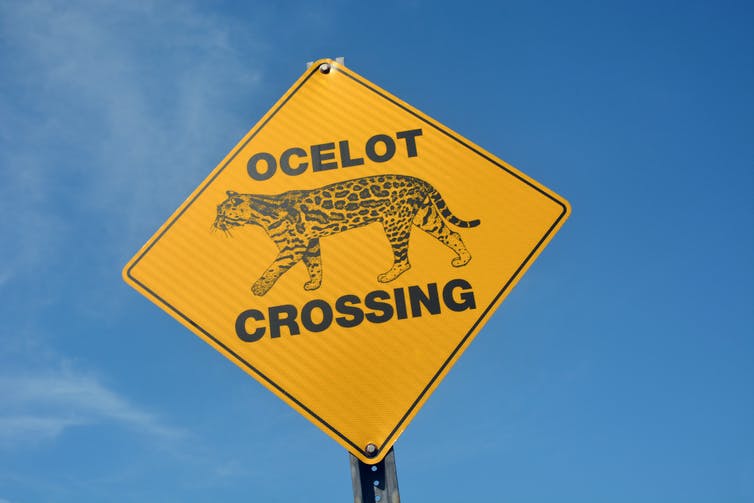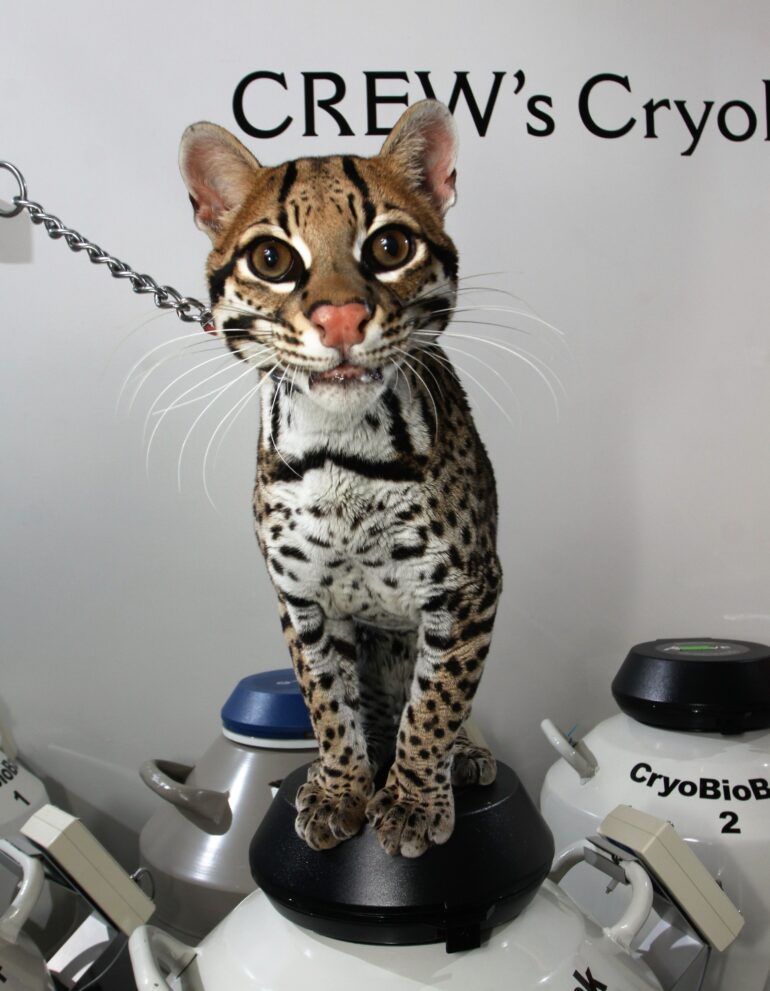The female ocelot lay anesthetized on the exam table, behind the scenes at the Albuquerque Biopark Zoo. As a veterinarian on the team preparing to artificially inseminate this animal, my palms were sweating at the thought of missing a step, dropping the sperm sample, or finding out our sample did not survive freezing. Any of these possibilities would end the procedure.
It was the first time anyone was trying to produce a pregnancy in a zoo-born female ocelot using sperm recovered from a deceased wild male ocelot. If the July 2021 operation worked, it would give his genes a way to live on past his death. This procedure was an important step in efforts to conserve endangered cat species so they can persist into the future.
Ocelots are medium-sized felines weighing around 20 to 30 pounds (9 to 13 kilograms) with sleek spotted coats. Their diet consists of small mammals, rodents, amphibians, reptiles and birds. Ocelots are primarily solitary cats, most active in the evening from dusk to dawn.
While people manage zoo-housed ocelots’ reproduction to maintain genetic diversity, it’s a different story for their wild relatives. There are currently only 50 to 80 ocelots (Leopardus pardalis) known to exist in the wild in the U.S., and that population is too small to be sustainable long term. These endangered animals face ongoing threats of habitat loss and fragmentation, and vehicle strikes. And because of their diminished numbers, they are at risk of inbreeding.

With so few individuals left in the wild in the U.S., each ocelot hit by a car could affect the species’ survival.
kzubrycki/iStock via Getty Images Plus
Over the past 25 years, scientists at the Center for Conservation and Research of Endangered Wildlife, or CREW, led by veterinarian Bill Swanson, have been working on technologies that may eventually help add some more genetic diversity to the wild ocelot population. They’ve developed and refined techniques for sperm collection, frozen storage and artificial insemination of ocelots and other endangered cat species.
These innovations have played a key role in sustaining the genetic diversity of cat populations within zoos. Now, we’re trying to go a step further and apply these techniques in wild ocelots.
By creating gene flow among zoo-based ocelots and wild ocelots in different regions, we can increase the genetic diversity of both populations. With wild ocelots, we hope to combat their declining ability to produce offspring, fight infection and maintain adequate numbers in the wild for conservation of the species in the U.S.
Salvaging sperm to increase diversity
As a recently graduated veterinarian, I joined my mentor, Debra Miller, at the University of Tennessee’s Comparative and Experimental Medicine Department and in her work at UT’s Center for Wildlife Health. From there, my interests in wildlife conservation led me to this multi-institutional collaboration focusing on the…



